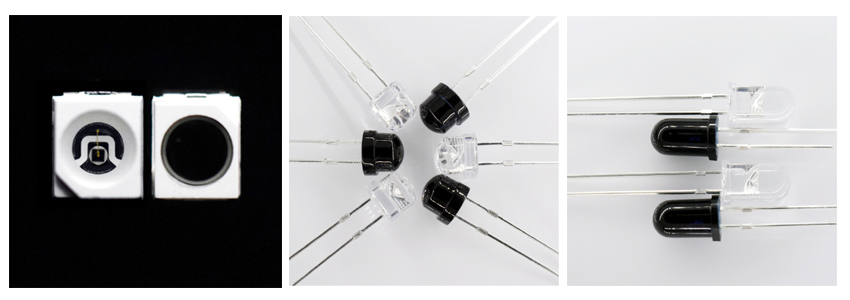
Privacy statement: Your privacy is very important to Us. Our company promises not to disclose your personal information to any external company with out your explicit permission.
940nm LED can be package with SMD LED type and LED Lamps type. But during the application, the light of IR LED in 940nm wavelength is safe?
The safety of 940 nm (nanometer) wavelength, commonly used in infrared (IR) light-emitting diodes (LEDs) and lasers, is a topic of concern and interest, particularly regarding its impact on human eyes. To determine whether 940 nm is eye-safe, it is crucial to understand the nature of this wavelength, its interaction with the eye, and the safety standards associated with it.
Infrared light falls within the electromagnetic spectrum, with wavelengths longer than those of visible light. The human eye is sensitive to wavelengths ranging from approximately 400Nm LED wavelength (violet) to 730nm LED wavelength (red). Beyond this range, light becomes invisible to the naked eye. However, this does not mean that it cannot affect ocular tissues.
The potential harm caused by exposure to infrared radiation depends on various factors such as wavelength, power density, exposure duration, and the sensitivity of ocular tissues to the specific wavelength. In the case of 940 nm, it is generally considered to be eye-safe under normal operating conditions.
The primary reason for the eye safety of 940 nm is its relatively low absorption by the cornea, lens, and retina. The cornea, being the outermost layer of the eye, acts as a protective barrier against foreign objects and excessive light. It absorbs most of the UV light and a significant portion of shorter wavelength visible light, but it is relatively transparent to 940 nm infrared light.
Similarly, the lens, located behind the cornea, absorbs UV light and some visible light, but it is also relatively transparent to infrared light, including 940 nm. The retina, which is the light-sensitive tissue at the back of the eye, is the most critical concern when it comes to eye safety. However, at 940 nm, the retina is also relatively insensitive, reducing the risk of damage.
It is important to note that while 940 nm is considered eye-safe under normal operating conditions, prolonged or intense exposure to this wavelength can still cause harm. The International Electrotechnical Commission (IEC) has established safety standards to ensure the safe use of lasers and other sources of optical radiation, including infrared.
According to the IEC 60825-1 standard, lasers emitting at 940 nm fall into Class 1 or Class 1M, depending on the power output. Class 1 lasers are considered safe under all conditions of normal use, including prolonged viewing, while Class 1M lasers are safe when viewed with optical instruments (such as magnifying glasses) but may pose a risk if viewed directly with the naked eye.
The IEC standards also define exposure limits, specifying the maximum permissible exposure (MPE) for different wavelengths and durations. These limits are based on extensive research and take into account the potential for both thermal and photochemical damage to ocular tissues.
To ensure eye safety, manufacturers of devices that emit 940 nm infrared light, such as IR LEDs and laser diodes, must adhere to these safety standards. They incorporate appropriate safety features, such as beam divergence, power limitations, and optical filters, to minimize the risk of eye damage.
In conclusion, 940 nm infrared light is generally considered eye-safe under normal operating conditions. Its relatively low absorption by ocular tissues, particularly the cornea, lens, and retina, reduces the risk of damage. However, adherence to safety standards, such as those established by the IEC, is crucial to ensure safe use and prevent any potential harm associated with prolonged or intense exposure to this wavelength.

LET'S GET IN TOUCH
Tel: 86-0755-89752405
Whatsapp: +8615815584344
Address: No.3, Lida alley, Qiuwu community, Longgang District, Shenzhen, Guangdong, China. 518116, Shenzhen, Guangdong China
Website: https://www.bestsmd.com

Privacy statement: Your privacy is very important to Us. Our company promises not to disclose your personal information to any external company with out your explicit permission.

Fill in more information so that we can get in touch with you faster
Privacy statement: Your privacy is very important to Us. Our company promises not to disclose your personal information to any external company with out your explicit permission.